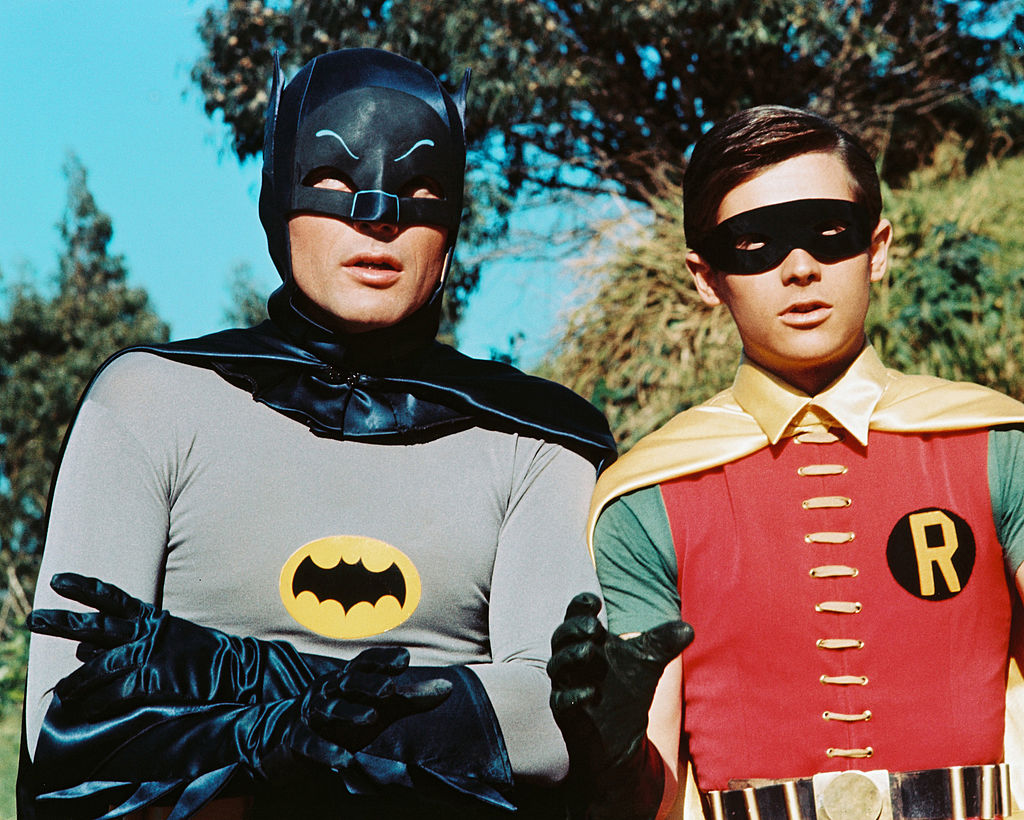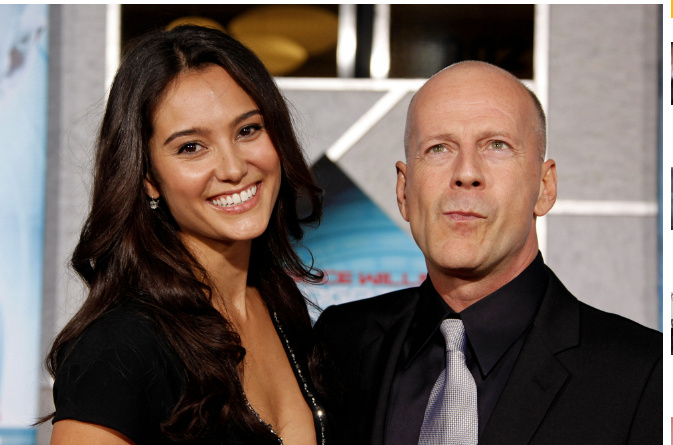
In 1966, Batman wasn’t just a movie — it was an explosion of pop culture that forever changed the landscape of superhero media.
The iconic movie, starring Adam West and Burt Ward, epitomized the campy, colorful, and over-the-top style of the 1960s — a time when the cultural landscape was a swirl of pop art, psychedelic patterns, and a playful sense of humor.
And, as with most legendary films, there were plenty of behind-the-scenes moments and wardrobe malfunctions that made the Batman movie just as memorable as its on-screen antics.
Cynical reason behind the movie
Too me, the first Batman movie is a brilliant embodiment of 1960s pop culture.
The eye-popping bright colors, the absurdly exaggerated fight scenes, and the humor that bordered on the ridiculous were all signs of the time. America in the mid-’60s was a place in transition — facing political upheaval, social change, and a cultural revolution. What better way to escape reality than through a campy, light-hearted comic book hero who dealt with villains like The Joker, The Penguin, and Catwoman in a world where the worst thing that could happen was a laugh track?
Of course, there were some pretty savvy and, let’s be honest, a bit cynical reasons behind the 1966 Batman movie too.

Producer William Dozier thought, “Hey, why not get this big-screen Batman movie out there while the first season of the TV show is still in the works to really hype things up?” Sounds like a genius move, right?
But 20th Century-Fox wasn’t having it. They weren’t about to foot the whole bill for a movie when they could just share the cost of a much less risky TV series. So, while Dozier was dreaming big, the studio played it safe and let him take the movie route on his own. Classic Hollywood move — nothing like a little calculated risk…
Adam West’s two must-have conditions
Back in 1966, when Batman hit the scene, Adam West was at the top of his game, a pop culture sensation. Tall, chiseled, and with that baritone voice, he was the perfect all-American Bruce Wayne. But before becoming Gotham’s iconic crimefighter, Adam West was just another actor looking for his big break.
In fact, he was born William West Anderson and actually changed his name to “Adam West” when he moved to Hollywood in 1959, after a few small TV roles.
Batman producer William Dozier didn’t just cast West because of his good looks and charisma, but because he had spotted him playing a James Bond-style spy, Captain Q, in a Nestlé Quik commercial.
When Adam read the pilot script for the 1966 Batman series, he was hooked after just 20 pages. As he said in a 2006 interview, “I read the pilot script and knew after 20 pages that it was the kind of comedy I wanted to do.”

The casting decision came down to a showdown between West and Lyle Waggoner, and West finally agreed to do the film on two conditions. First, he wanted more screen time as Bruce Wayne, not just Batman.
Second, he wanted to approve who would play Robin. He gave the green light to Burt Ward, who had a brown belt in karate but zero acting experience.
According to West, he understood the material and brought something unique to the role as Batman: “You can’t play Batman in a serious, square-jawed, straight-ahead way without giving the audience the sense that there’s something behind that mask waiting to get out, that he’s a little crazed, he’s strange.”
A curse in disguise
Despite being the Batman in the iconic, campy 1966 TV series, Adam West found himself constantly battling his greatest success.
Even though he appeared in a ton of films and TV shows throughout his career, he was always referred to as ”TV’s Batman.”
After the show ended, he had a tough time landing roles, but he made a legendary comeback as the voice of Quahog’s mayor on Family Guy.
Sadly, West died in 2017 after a short battle with leukemia.
The Joker refused to shave off his mustache
Did you know that Cesar Romero, who famously played the Joker, absolutely refused to shave his iconic mustache for the role?
Instead, the makeup artists just slathered it with white paint. The tall, suave actor stuck with this quirky decision for every episode of the TV series and the movie, and let’s be honest — no one was fooled by the ”cover-up.” If it had been such a big deal, the producers could have easily used a prosthetic to hide his mustache, but Romero’s stubbornness became part of his Joker charm.
Romero passed away in 1994 at the age of 86 due to complications from a blood clot after being hospitalized with severe bronchitis and pneumonia. He is honored with a star on the Hollywood Walk of Fame at 6615 Hollywood Boulevard for his contributions to film and another star at 1719 Vine Street for television.
Untold story of Lee Meriwether
Contrary to popular belief, Lee Meriwether never played Catwoman on the Batman TV series (1966) — that honor went to Julie Newmar and Eartha Kitt. However, Meriwether did take on the iconic role in the 1966 Batman: The Movie.
But apparently, filming of the movie started before Lee Meriwether was officially cast as Catwoman. As a result, the iconic villainess is missing from the opening scene aboard the Penguin’s submarine, where the other three villains make their appearance.

A fun little detail that not many know about (perhaps because Lee shared it in a 1966 newspaper interview) is that Lee had a brilliant way of preparing for her role as Catwoman. The former Miss America star actually had two cats at home and decided to study them closely before shooting the movie.
”I watched them carefully. I tried to move as they did – sort of slinky, quiet, yet able to pounce viciously without warning,” she said.
The wardrobe malfunction
Here’s a fun little fact for you, especially if you’ve ever caught Batman: The Movie (1966) on the big screen! In what’s possibly one of the most legendary wardrobe malfunctions in TV and film history, the movie features an unexpected and unforgettable moment.
In the beginning of the film, Batman and Robin soar over “Gotham City” (actually, Los Angeles), in a helicopter. They pass by a group of bikini-clad women on a rooftop. And if you’re eagle-eyed, you might notice one of the bikinis (the red one) didn’t stay in place — revealing a little more than intended.

Of course, the film’s producers quickly blurred it out in the final cut since they couldn’t reshoot the scene.
This little detail has fascinated and surprised quite a few fans, including one Reddit user who wrote: “The blur makes it look like she has long hair down her front but it doesn’t make sense since they are jumping up and down and it looks like she has it in a ponytail. Used to watch this movie all the time and never noticed it.” It’s one of those quirky moments that makes you appreciate just how much attention (or lack of) went into those classic campy details.
Adam West’s “fake” moment
But perhaps the most interesting bit of trivia from the 1966 Batman movie comes from none other than Adam West himself. In an interview years after the movie was released, West revealed that there was one scene in the film that he just couldn’t take seriously.
It’s the iconic “shark repellent” scene, where Batman is dangling from a helicopter with a bomb in hand and is attacked by a shark.
To save himself, he uses a “shark repellent” spray, which miraculously works, and he escapes unharmed. For West, however, the scene was so outlandish that he couldn’t help but laugh at how fake it all looked.

West also recalled how displeased the producers were with the sound effects made when Batman was hitting the shark. West chuckled, saying he told them it didn’t really matter, considering how fake the shark looked in the first place.
Additionally, there’s a blooper right in the middle of that iconic scene. When Robin hands Batman the Shark Repellent Bat Spray, he’s hanging upside down directly above Batman. But when Batman uses the spray on the shark, Robin is mysteriously nowhere to be seen.
Looking at the scene today, with its oversized plastic shark and overly theatrical fighting, feels almost absurd. But that’s part of the charm. The Batman movie wasn’t trying to be taken seriously. It was a playful satire of the superhero genre, using exaggerated props and absurd humor to entertain audiences who needed a break from the heavy realities of the 1960s.
The enduring legacy of 1966’s Batman
Despite its campiness and the occasional wardrobe mishap, the 1966 Batman movie has maintained a nostalgic and beloved place in pop culture. It’s a time capsule, capturing a moment in history when superheroes were fun, lighthearted, and didn’t have to carry the weight of the world on their shoulders.
While we’ve come to know Batman as a dark, brooding figure, the 1966 movie gave us a Batman who was all about gadgets, color, and humor.
For example, at about 15:00 into the film, The Penguin delivers the line, “We shall hang together, or most assuredly we shall all hang separately.” This humorous phrase, which sounds like a villainous threat, was actually spoken by Benjamin Franklin during the American Revolution when he feared being accused of high treason by his fellow delegates.
It’s a fun twist in the movie, showing how even the villains of Gotham can’t resist a little history lesson – all while keeping things lighthearted and playful.
And around 1:40:00 into the film, one of the United World delegates starts banging his shoe on the table while shouting. That’s a nod to Soviet leader Nikita Khrushchev’s famous shoe-banging moment during the 1960 United Nations General Assembly debate

The wardrobe malfunctions, the over-the-top villains, and even the fake-looking sharks — they all added up to an unforgettable piece of cinematic history. Do you remember this film? And did you notice any of these hilarious bloopers



